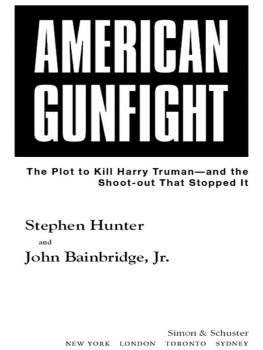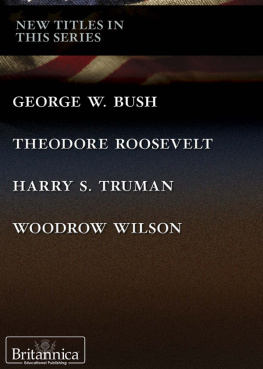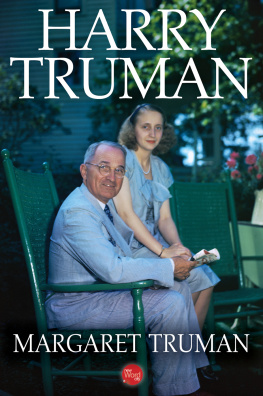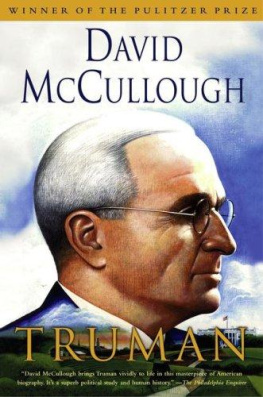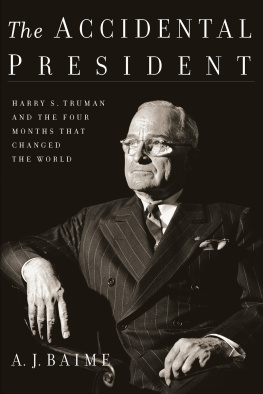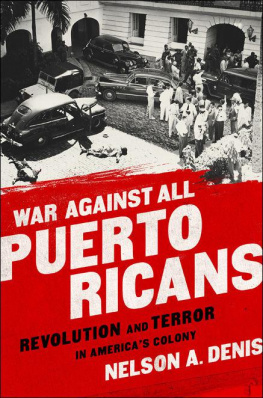
SIMON & SCHUSTER
Rockefeller Center
1230 Avenue of the Americas
New York, NY 10020
Copyright 2005 by Stephen Hunter and John Bainbridge, Jr.
All rights reserved,
including the right of reproduction
in whole or in part in any form.
SIMON & SCHUSTER and colophon are registered trademarks of Simon & Schuster, Inc.
Designed by Paul Dippolito
Library of Congress Cataloging-in-Publication Data Hunter, Stephen, date.
American gunfight : the plot to kill Harry Truman, and the shoot-out that stopped it / Stephen Hunter and John Bainbridge, Jr.
p. cm.
Includes bibliographical references (p. ) and index.
1. Truman, Harry S., 18841972Assassination attempt, 1950.
2. Collazo Oscar, 19143. Torresola, Griselio. 4. NationalistsPuerto RicoBiography. 5. AssassinsBiography. 6. Blair House (Washington, D.C.) 7. United States. Secret ServiceOfficials and employeesBiography. I. Bainbridge, John, date. II. Title.
E814.H36 2005
364.152409227295dc22 2005051587
ISBN-10: 0-7432-8195-0
ISBN-13: 978-0-7432-8195-9
Photo Credits
Grateful acknowledgment is made to the following for permission to reproduce illustrations:
AP/Wide World Photos: 11; Bettmann/Corbis: 3, 7, 8, 10, 16; Carmen Zoraida Collazo: 5; Phil Licata Photography LLC: 14, 15; United States Secret Service: 6; University of Puerto Rico Library System: 1, 2, 4; John G. Zimmerman: 12, 13.
Visit us on the World Wide Web:
http://www.SimonSays.com
To the - -R-I- -
Authors Note
Everything in this book is true according to transcript, interview, secondary source, or official document. Interpretations, deductions, and opinions, which should be clear from context, are our own.
Introduction
O n November 1, 1950, two Puerto Rican Nationalists named Oscar Collazo and Griselio Torresola pulled German automatic pistols and attempted to storm Blair House, at 1651 Pennsylvania Avenue, Washington, D.C., where the president of the United States, Harry S. Truman, was at that moment2:20 P.M. on an abnormally hot Wednesdaytaking a nap in his underwear. They were opposed by a Secret Service security detail led by Special Agent Floyd M. Boring, consisting of Special Agents Vincent P. Mroz and Stewart G. Stout, Jr., and White House police officers Leslie W. Coffelt, Joseph O. Davidson, Joseph H. Downs, and Donald T. Birdzell. In the brief exchangeunder forty secondsbetween twenty-nine and thirty-one shots were fired in an area about ninety feet by twenty feet, though the exchange broke into two actions at either end of the property, where the ranges were much shorter. When it was over one man was dead, another was dying, and two more were seriously injured.
The story was of course gigantic newsfor about a week. Whats remarkable about it is not how big a story it was but how quickly it went away. Today, few Americans even remember it, or if they do, they have it mixed up with a later event. In 1954, four Puerto Rican Nationalists pulled guns and shot up Congress. Soon enough the two stories melded in the U.S. folk imagination under the rubric of stereotype: hot-tempered Latin revolutionaries, undisciplined, crazy even, pursuing a dream that made no sense at all, Puerto Rican independence.
Even those few North Americans who could distinguish between the two events couldnt prevent the actual thing itself from eroding, losing its detail and meaning and settling sooner rather than later into a kind of comforting folk narrative. For Americans, it always encompassed the following points:
The grievances Oscar and Griselio were expressing were fundamentally absurd: Puerto Rico had been given the gift of United States culture and political traditions and was rapidly becoming Americanized, as it should be. What was wrong with these two that they didnt understand how benevolently they had been treated?
Americans believed they were a little crazy. The evidence is clear: the assault was thrown together on the run by these two men of no consequence and no meaningful cause. One of them didnt even have a gun, so the other had to go out the day before and buy him one. They were upset by newspaper reports of what was going on in Puerto Rico, where an equally silly group of men were attempting a coup, like they do down there all the time, something equally stupid and futile.
In Washington, the two gunmen further expressed their deep state of mental disorganization by acting in strange ways.
On the morning of the attempt, for example, they went sightseeing. It turned out they thought Truman lived in the White House, and a cabdriver told them the president had moved across the street while the White House was being remodeled. Then, back in the hotel room, one had to teach the other how to work the gun.
One of them even went up to the hotel clerk on the day of the attempt as he was leaving and inquired about an extended checkout time.
And that was the smart one!
The dumb one was an unemployed salesman, a ladies man, an abject failure in life. Nothing at all is known about this fellow, but why should it be, since he is so predictable: like so many disgruntled would-be assassins, this was his chance to count in a world that had denied his existence. They had no plan and no understanding of tactics.
In the actual fight itself, the Secret Service and the White House policemen essentially brushed them aside.
The two never came close to getting into Blair House. And even if they had, it would have made no difference, as an agent with a tommy gun was waiting just inside the door.
Harry Truman was never in any mortal danger.
In the end, many Americans concluded, it was more a joke, a farce, an opera buffa, than anything else.
There is only one trouble with assigning these meanings to the 38.5 desperate, violent seconds of November 1, 1950.
Every single one of them is wrong.
1. A Drive Around Washington
T his story could start in a great number of places. It could start with Columbuss arrival on a Caribbean island called Borinquen in 1493, or General Nelson A. Miless arrival on the same island, now called Puerto Rico, in 1898. It could start at a Harvard graduation, a football game in DuBois, Pennsylvania, the collapse of a staircase railing in the capitol in San Juan, even a Virginia farm boys decision to go to the city and become a police officer.
But no matter where it starts, it ends in the same place: a fury of gunfire that broke apart a quiet afternoon on Pennsylvania Avenue in Washington, D.C., just across from the White House, November 1, 1950. It ends as most gunfights do: with men dead, men wounded, wives in mourning, causes lost, lives shattered, duty followed hard, and regrets that never pass.
But lets beginarbitrarily, to be sureat 3:18 P.M., September 23, 1950, in Washington. On that day at that time, a father and a daughter slipped out the back door of their Federal-style townhouse, climbed into a well-waxed specially built black Lincoln driven by a tough-looking customer who carried a gun, and went for a little drive. The old man may have looked like a rich snoot out on the town but rich snoot doesnt describe him: he was famously plainspoken, hardworking, sensible, tough and had the common touch. He was sixty-six, well dressed, a giver-of-hell from the Show-Me State, a man who stood in the kitchen no matter the heat. He was the thirty-third president of the United States, Harry S. Truman.

